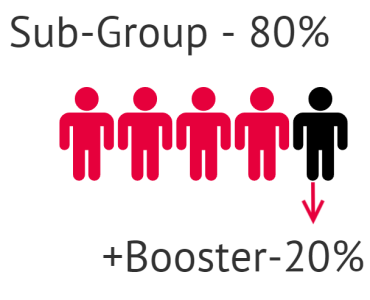TGM RESEARCH BLOG
Understanding Booster Samples: An Essential Guide for Student Researchers
This guide covers everything student researchers must know about booster samples in market research - from conceptualization to ethical design considerations. Learn key techniques for representation enhancement through targeted subgroup sampling.
Understanding Booster Samples
Defining Booster Samples
A booster sample comprises supplemental survey responses gathered from a particular segment of the initial sample that requires expanded representation. Typically, preliminary analysis reveals inadequate sample sizes for a subgroup critical to research aims. Boosting addresses this shortfall.
Booster Rationale and Significance
By spotlighting specific factions, boosters counter the tendency of random sampling to overlook smaller segments. This strengthens result accuracy and relevance regarding niche groups. For instance, boosters can provide opinions from customer subgroups utilizing an evaluated product.
The Mechanics: Identifying Booster Needs
The first step entails pinpointing underrepresented groups that need their perspectives boosted through additional data collection. Common bases for boosters include age, gender, ethnicity, income, location, purchase behavior, etc. Statistical tests assess whether current subgroup samples support reliable analysis or if boosting is advisable to power insight potential.
Constructing the Booster Sample
The following processes underpin effective booster sample development:
- Defining the Target Subgroup: Clearly delineate the demographic, behavioral, or attitudinal qualities defining the boost group.
- Calculating Sample Size: Determine the number of extra responses required for meaningful detection of patterns and differences.
- Selecting Collection Methodology: Choose fitting data-gathering methods like surveys, interviews, focus groups, etc. based on resources.

Booster Advantages and Limitations
Advantages:
- Enhanced Subgroup Representation: Boosters guarantee adequate sample sizes for subpopulations that probability sampling might overlook.
- Focused Subgroup Insights: The additional responses facilitate a granular analysis of behaviors, preferences, and opinions for the booster group.

Limitations:
- Potential Sample Bias: Nonrandom targeting of boost groups risks selection biases influencing results.
- Restricted Generalizability: Boosted findings may not represent overall population parameters.
Booster Applications in Market Research
Common applications include:
- Niche Consumer Studies: Boosters help uncover nuances within specialized market segments like teens, elderly consumers, ethnic subgroups, etc.
- Customer Satisfaction Surveys: Ensuring sufficient feedback from specific customer categories like loyal patrons and new buyers.
Best Practices for Student Researchers
Follow guidelines like:
- Uphold research ethics without distorting results.
- Use boosters judiciously to fill subgroup gaps without overshadowing primary data.
So in summary, booster sampling offers immense value for students undertaking research by spotlighting vital perspectives that probability sampling overlooks. Just be mindful of biases!
As the leading online data collection agency, TGM Research conducted multiple market research projects across the regions. To discover more about our research practices and methodologies reach out to us..
Transform your approach. Let's talk research!
Explore articles to master your market research planning
